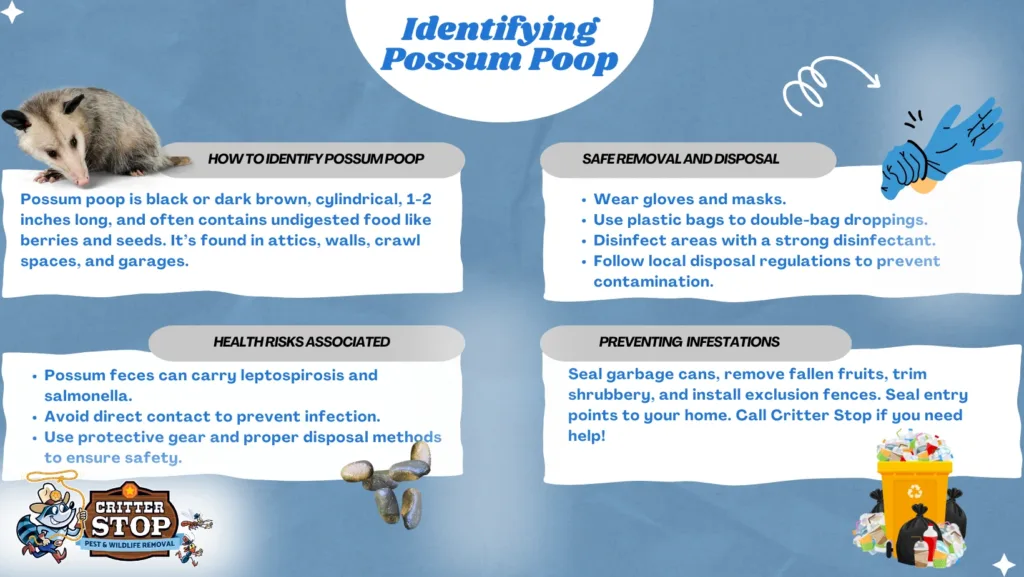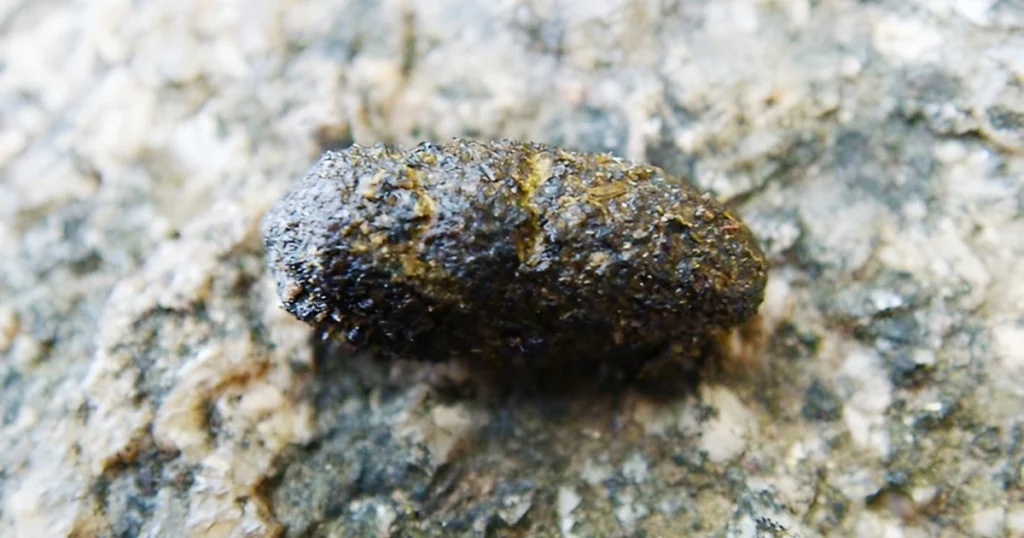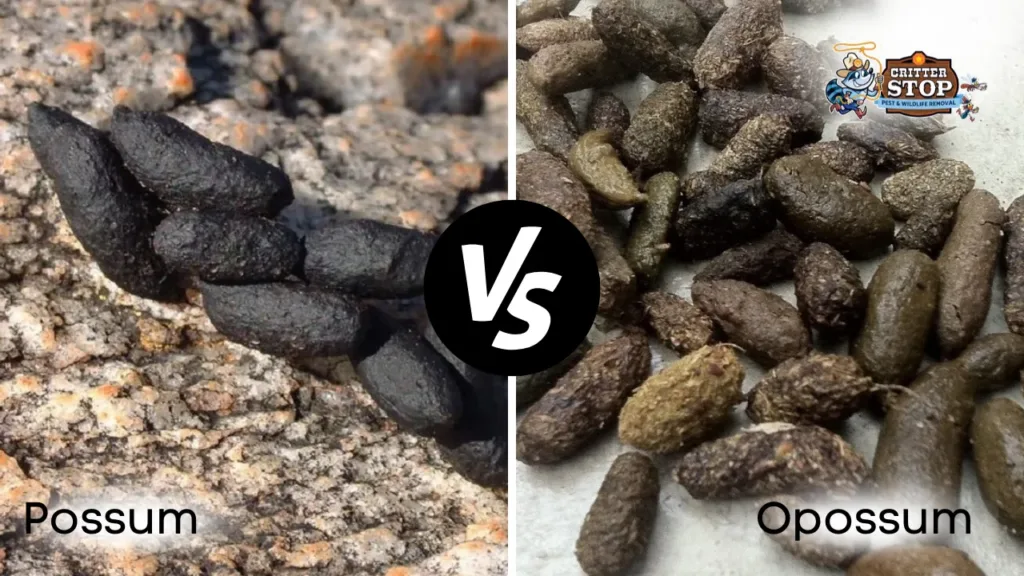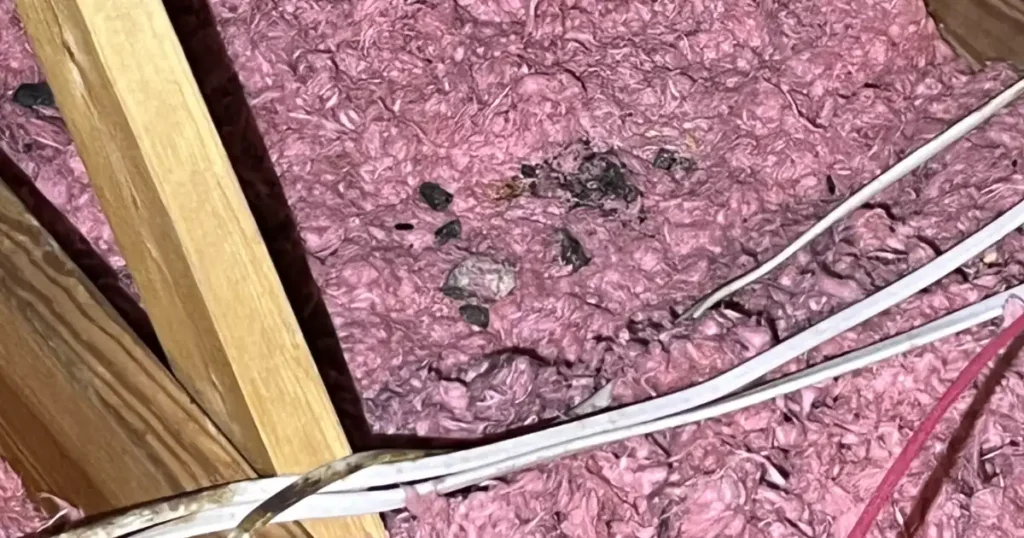
An unglamorous but necessary guide about possum poop images for anyone tired of guessing what's lurking in their attic
Let’s be honest — nobody wakes up hoping to spend their morning inspecting turds. But here you are, staring at some suspicious droppings in the yard or behind your toolbox in the garage. Too big for mice, too odd for dogs… and now you’re scrolling through possum poop images online with a mix of dread and morbid curiosity.
If that sounds like your situation, take a breath. This guide is your walk-through — from identifying possum feces to getting rid of it safely, and (more importantly) keeping those sneaky marsupials from making a comeback.

Because this isn’t just a case of “ew.” Possum droppings can be more than a smelly inconvenience — they can actually be hazardous. These critters may look slow and harmless, but their poop can carry nasty stuff like:
So whether it’s your shed, attic, or garden path, spotting these droppings early can help you stop a minor wildlife visit from turning into a costly infestation.

Possum droppings have a few telltale traits. If you’ve never seen them before (or even if you think you have), here’s what to watch for:
You might also find bits of undigested food like berry skins, seeds, or insect parts. Possums aren’t picky eaters, and their digestion shows it.
Need a visual? A quick online search for “possum poop images” can help confirm what you're dealing with — just maybe not right before lunch.

Animal droppings are a bit like bad handwriting — easy to confuse if you’re not familiar. Here's how to tell possum poop apart from other backyard suspects:
Much smaller (¼ inch or less), shiny, and pointed at both ends. Rats also drop their waste like confetti — small pellets scattered everywhere.
Bigger and thicker. You’ll often see undigested food like seeds or corn, and raccoons tend to pick one "toilet" spot and stick to it. Possum poop is more solitary.
You probably know this one already. Dog waste is softer, rounder, and much smellier. It also tends to appear in more predictable places (like your lawn after breakfast).

Possums aren’t exactly courteous guests. They leave their messes wherever they sleep, eat, or pass through regularly. Typical possum poop hotspots include:
If you’re spotting poop in any of these zones, it’s a good bet a possum is lurking nearby — or already set up shop.
Let’s dig into the stuff most people try not to think about.
Bottom line? Always treat possum poop as potentially infectious. Skip the DIY heroics unless you're doing it right.

Protect yourself like you’re dealing with something radioactive — because, well, you sort of are. Here’s your cleanup checklist:
Yes, it’s tedious. But it’s better than risking a trip to the ER over possum poop.

Once the mess is gone, it’s time to send a clear “No Vacancy” sign to any curious marsupials.
If you’ve cleaned, sealed, and double-checked your property, and those droppings keep showing up like clockwork, it’s time to call in the pros.
Critter Stop specializes in humane wildlife removal — including possums. They’ll not only evict the animals safely but also clean up the mess and make sure they don’t come back.
Call Critter Stop at (214) 234-2616
Or head to their website for a free inspection and expert help.
Wildlife control companies, academic sites, and extension programs often share clear, side-by-side photos. You can also check Critter Stop’s educational resources for examples.
Raccoon droppings are usually thicker, more segmented, and found in clusters. Possum droppings are slimmer, twisted, and more randomly scattered.
Usually, but diet affects color. Lots of fruit or plant matter can lighten the shade a bit. Dark brown to black is the most common.
It’s musky and earthy — not quite as foul as dog poop, but strong enough that you’ll know something’s not right if it’s indoors.
Yes. Dogs are especially at risk if they eat or sniff contaminated areas. Always clean thoroughly and monitor your pets around wildlife hotspots.
Eliminate food sources, close off hiding spots, and seal entry points. For stubborn cases, professional exclusion work may be needed.
Dealing with possum poop isn’t exactly fun dinner table conversation — but ignoring it won’t make it go away. A little early action (and the right info) can save you from major health risks and expensive repairs.
And if it all starts to feel overwhelming? You don’t have to go it alone.
Visit our Critter Library and learn more about our furry friends